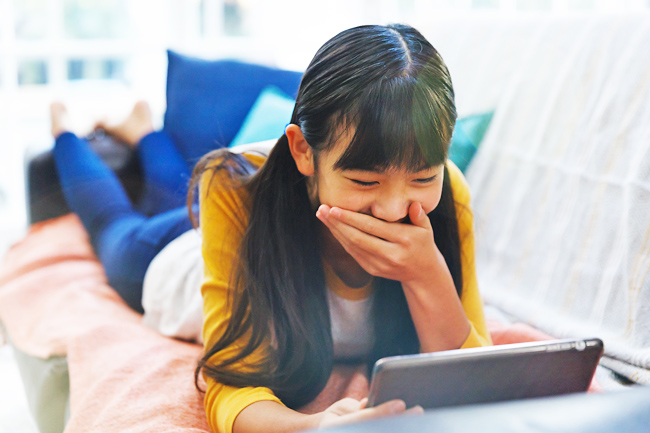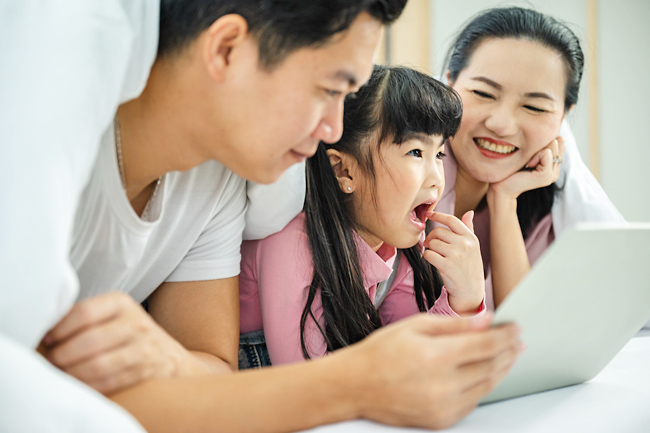ANN/THE STAR – Decades ago, cartoons were a treasured part of kids’ entertainment – something they’d enjoy before heading outside to the playground at their parents’ urging.
Saturday morning cartoons were a weekly highlight after school days, while video games were simple, TV-connected experiences, often featuring basic obstacle courses.
Today, advancements in technology, the rise of the internet, and the availability of streaming services have made animations, games, and other content accessible to kids 24/7, whether they’re at home or on the go.
The content itself has also transformed; alongside kid-friendly storylines, some animated series – especially on platforms like YouTube – may look playful but carry dark undertones.
Some of these shows feature eerie characters, like human-headed toilets or monstrous, purple-furred cats born from failed experiments. Likewise, certain video games may include content inappropriate for young players.
While these might not be harmful to adults (who can differentiate what’s real and what’s fictional), psychologists fear that when young children watch scary, violent or gory content, they are likely to be impacted on physical, emotional, behavioural and even spiritual levels.
In a study conducted by Malaysian and Indonesian researchers on the impact of watching horror movies among Indonesian children aged between 10 and 17, it found that watching horror films “can have a negative impact on children’s mental health”.
Published in Atlantis Press – an online open-access publisher for scientific, technical and medical content – the researchers note that children can experience various emotional disturbances including fear, anxiety and fear of events that may not happen.
“These emotional disturbances can affect a child’s mental health, and can lead to problems such as insomnia, eating disorders or behaviour problems,” it said.
Sunway Medical Centre clinical psychologist Evelyn Ngui Ailing said physically, children may find their sleep affected after being overstimulated by certain content.
“Their cognitive pathways may also be compromised as their logic and rationale are still underdeveloped, and power and aggression are used to solve problems,” she added.
More worryingly, Ngui said, prolonged exposure makes children desensitised to violent content.
“Storylines these days portray more gore and violence to keep the audience (in this case, children) hooked. It may be harder then, to teach gentle emotions like kindness and empathy to children when they are more attuned to extreme emotions,” she added. “Kids watch television shows or content as they learn about the world around them.
Behaviourally, children will imitate these ‘heroes’ and scenes they watch on shows as short as 10 minutes.
“And if they watch violent content, they are likely to model violent or aggressive behaviour, and they will find it difficult to control these impulses due to their lower inhibitory capabilities,” she said.


PARENTAL CONTROL
Sales manager Gahyatthri Pandian, 41, said she is aware that not all supposedly kids’ content online and on TV are suitable for young children.
“Not all cartoons are okay for kids to watch. There are some shows on streaming platforms that are rated for kids aged seven and up, but when I watch them, I think that these shows are more suitable for teenagers, not young children.
“While the message may come across as positive, the language may not be suitable for kids. There are also many cartoons where the content and themes are mature. The language used is also strong and some cartoons’ storylines are not suitable for Asian children’s cognitive and emotional maturity,” she said.
In a 2017 study published in Cognitive Development in Digital Contexts, researchers underline the importance of keeping tabs on what kids watch online and on TV. “Parental mediation can impact what content a child is exposed to and how they use the technology,” the study said.
Gahyatthri has three children: Leviniaa Jesllyn, 11, Dhiya Ashllyn, eight, and Aryan Rylan, six, and she said she watches TV and the Internet with them so she knows what they watch.
“I know their favourite cartoons but I also have come across content which I feel is inappropriate for their age which come up on their feed, especially on YouTube,” she added.
“When this happens, I will explain to them why certain shows are unsuitable.”
Home baker Thangam Chellam, 45, said she used to monitor what her children – Ashwinaa, 18, and Devhesh, 15, – watched when they were younger.
“I needed to see what they were watching so that they didn’t watch something that was not for their age. They watched a lot of cartoons when they were kids: Devhesh was into sports-themed cartoons and Ashwinaa, although she did not watch much television, loved watching anime.”
Thangam said she knows that there are unsuitable content that kids watch.
“I don’t remember the titles of the shows but I really disliked some cartoons with inappropriate language. I feel like those cartoons are not kid-friendly. I also did not approve of cartoons with too much violence, particularly ones that involved bullying and hitting other characters.”
FILTERING CONTENT
Ngui said parents should have a good idea about what online content a child should watch, either through word of mouth, social media or by going through the exact content their child watches.
A good rule of thumb is through the MEOW acronym – which stands for Message, Emotion, Outcome and Wisdom.
“Generally, I recommend that parents keep their children away from online content, gadgets, or television programmes before the age of three to ensure adequate brain development and psychological well-being.”
Ngui said it’s not only cartoons and online content that parents need to filter. News items with gory scenes (like war or natural disasters) are also unsuitable for children.
“I strongly believe that the beauty and innocence of childhood should be maintained for as long as possible.
“There will be a time when your child will hear about, read or see violence in the course of their lives, and children’s brains still find it difficult to differentiate between what is real and what is portrayed on screen,” she said.
If children need to be educated about a major catastrophic event, Ngui said, parental guidance is crucial to teach them ways of finding physical and psychological safety as part of the education.
“Parents can teach children how fear shows up physically in the body (fast heart rate or sweating palms) and how to manage fear (breathing slowly, reaching out for parents for a hug and telling someone they trust about it).
CO-WATCHING WITH KIDS
Gahyatthri said watching TV and the Internet with her kids helps her to be aware of what they are watching. “After watching a show, my kids and I often discuss it and I would ask them their views on the storyline,” she said. “It’s also a good way to bond.”
Thangam does the same thing because “it is nice to watch cartoons even at my age. I particularly like watching classic Disney cartoons and animated films with my kids”. What these mothers do is in line with Ngui’s advice: To always keep an eye on what your child watches online. – Syida Lizta Amirul Ihsan & Dhivya Danielle






